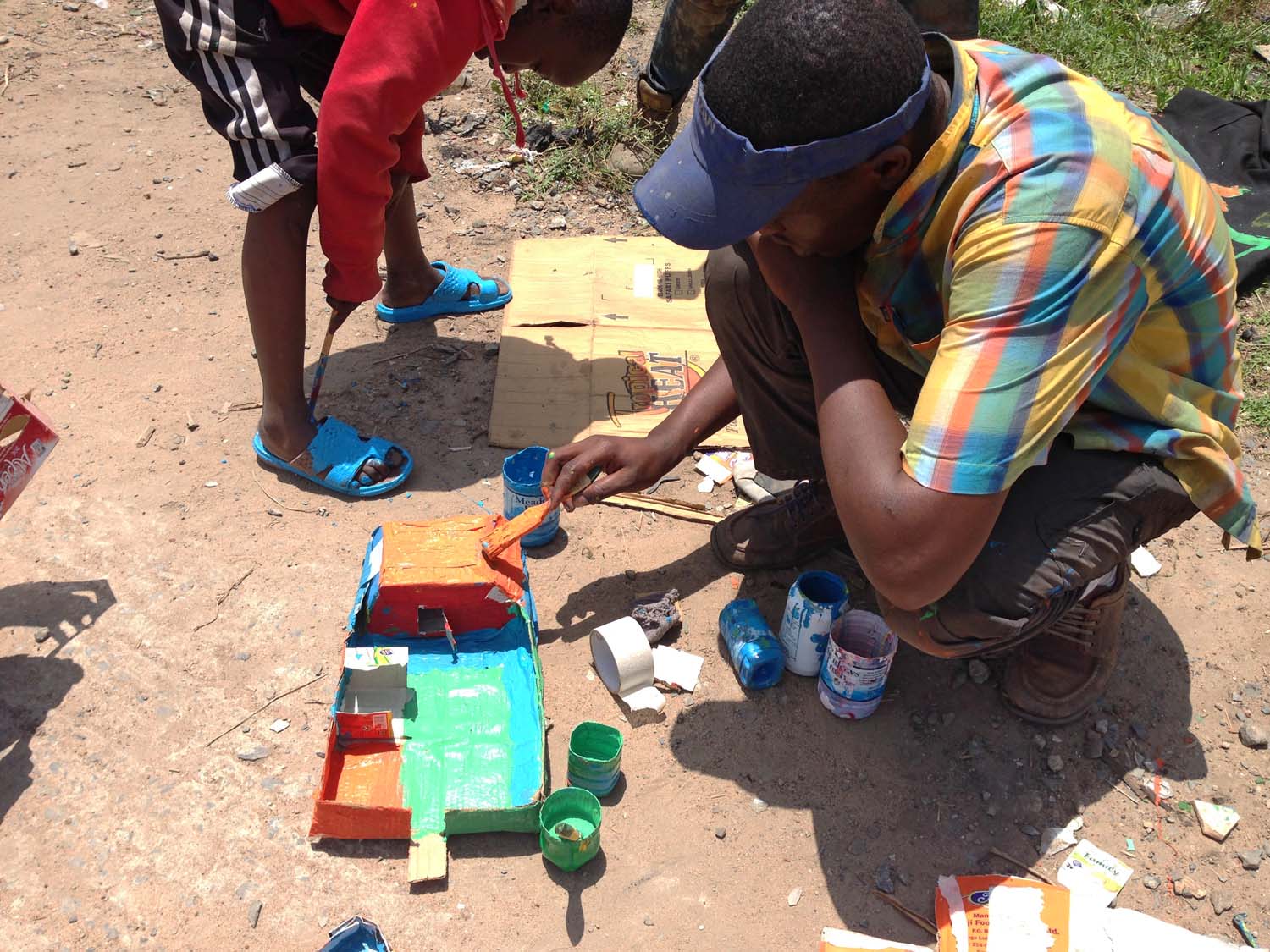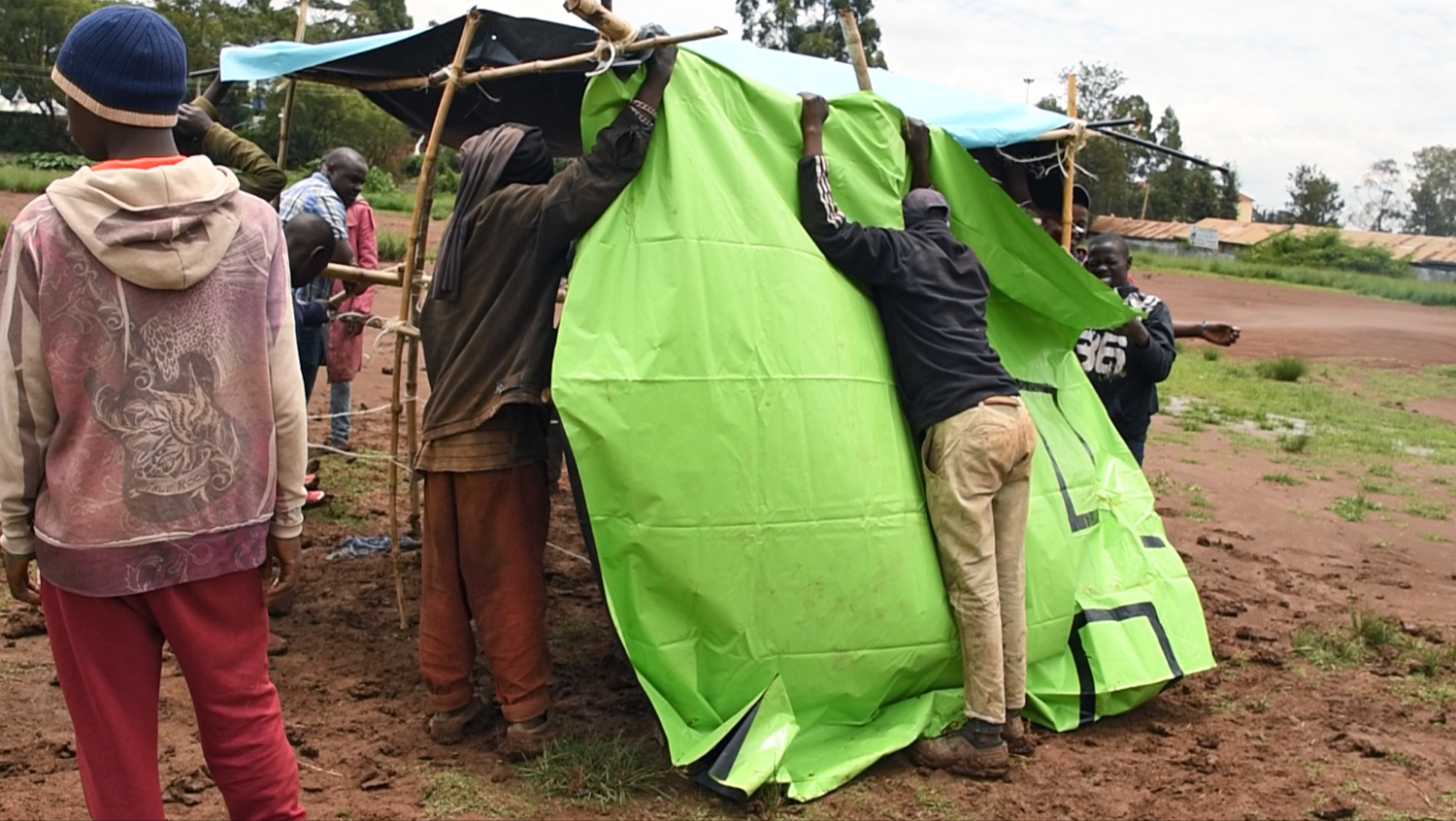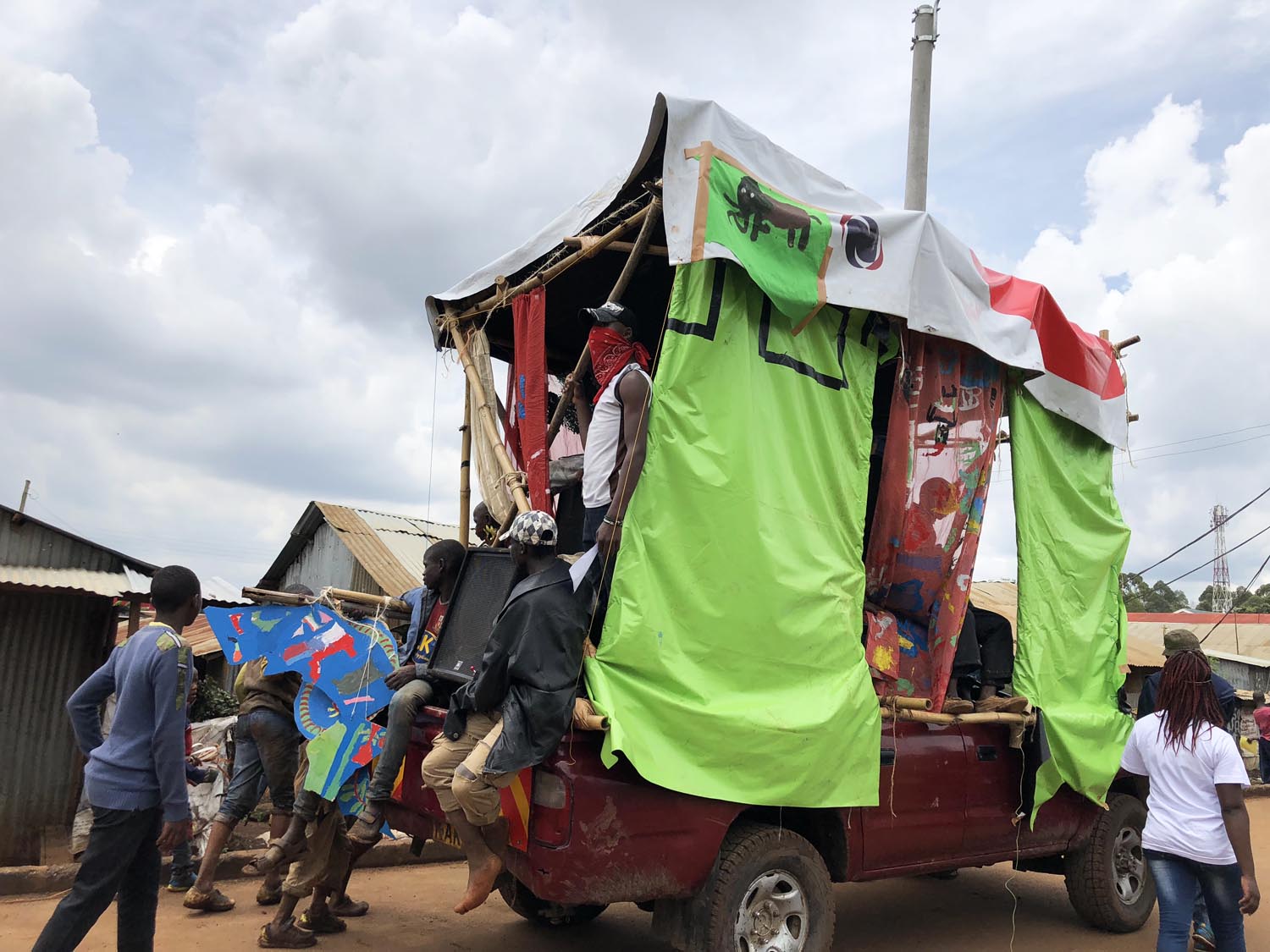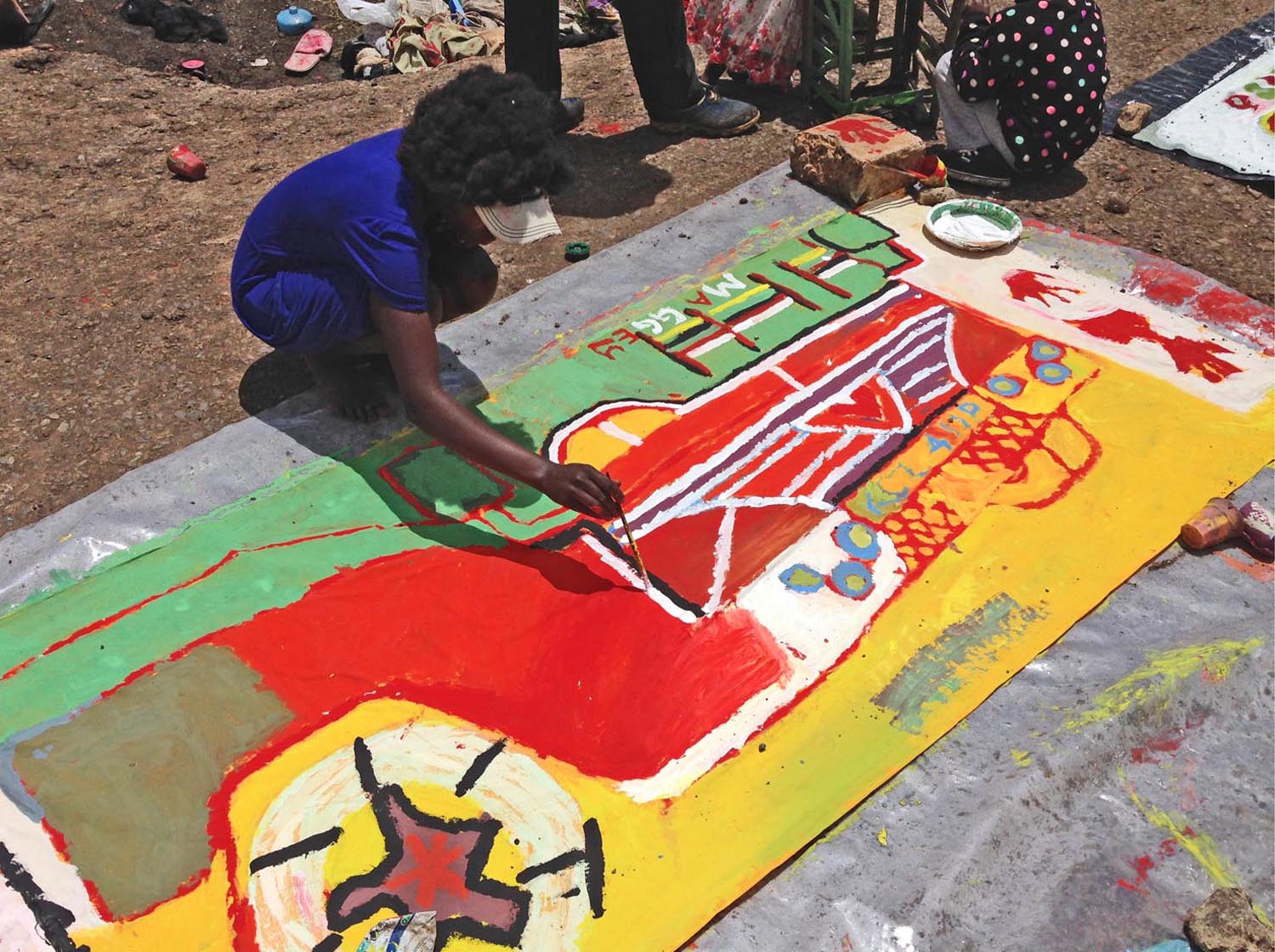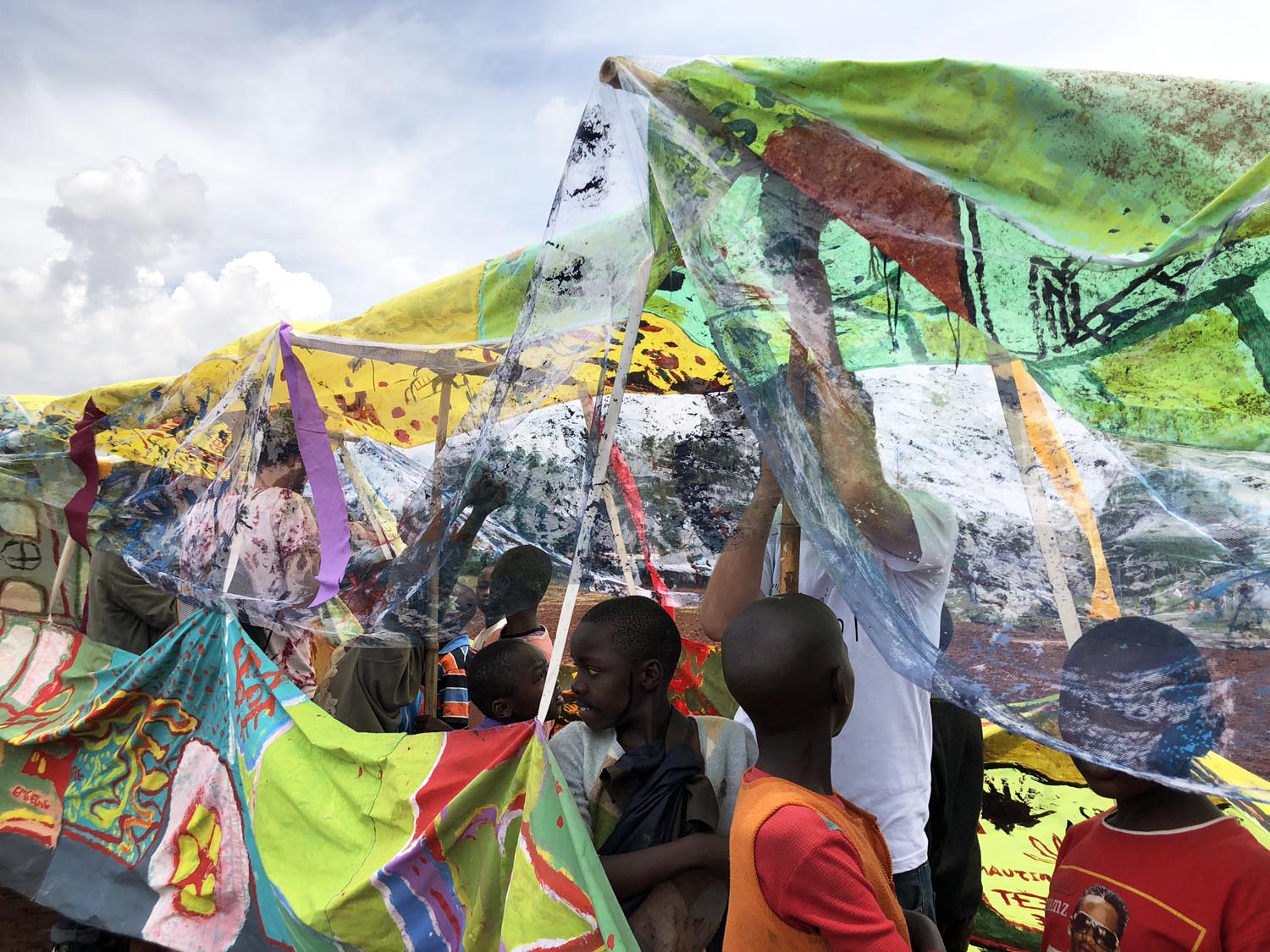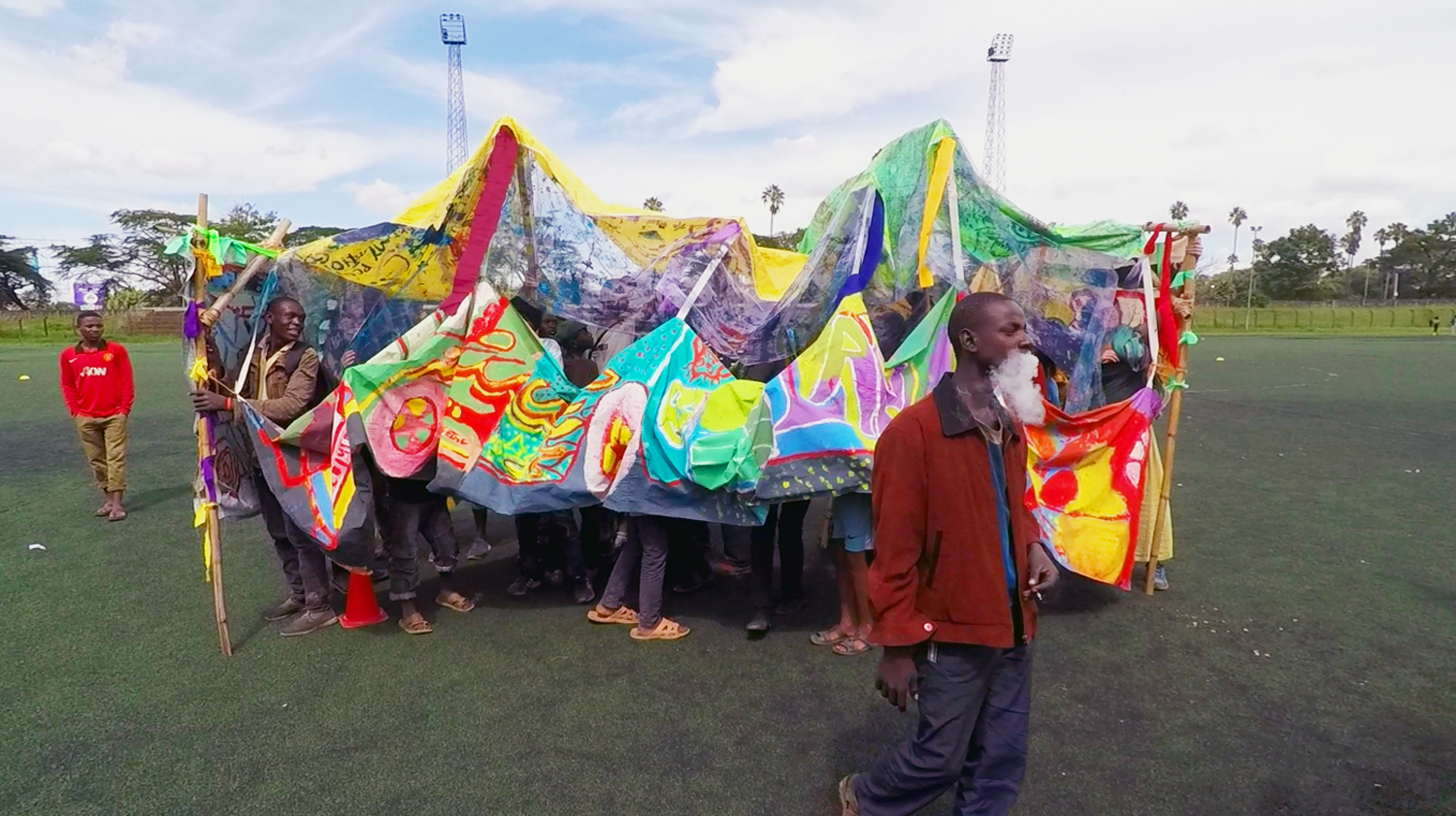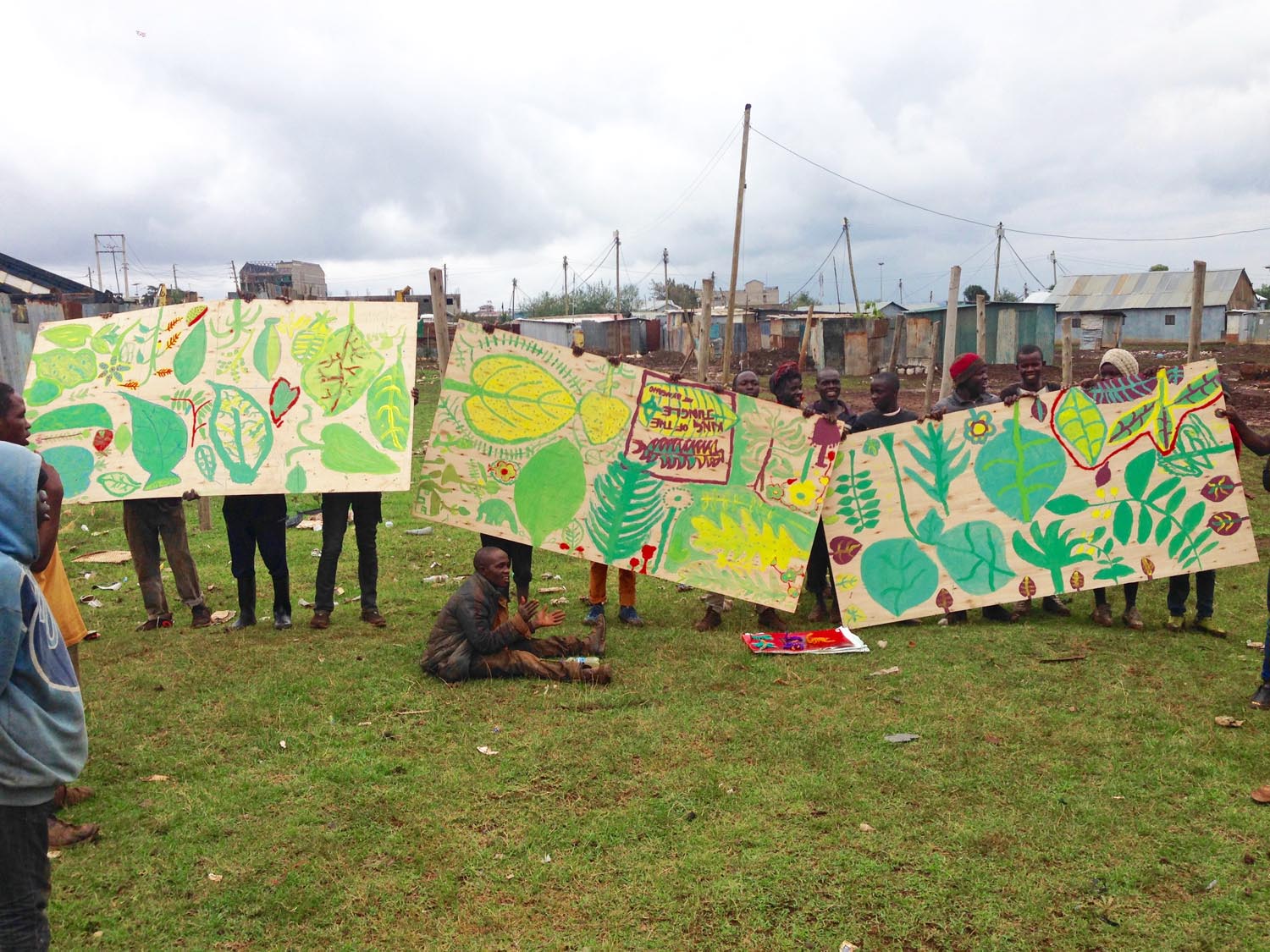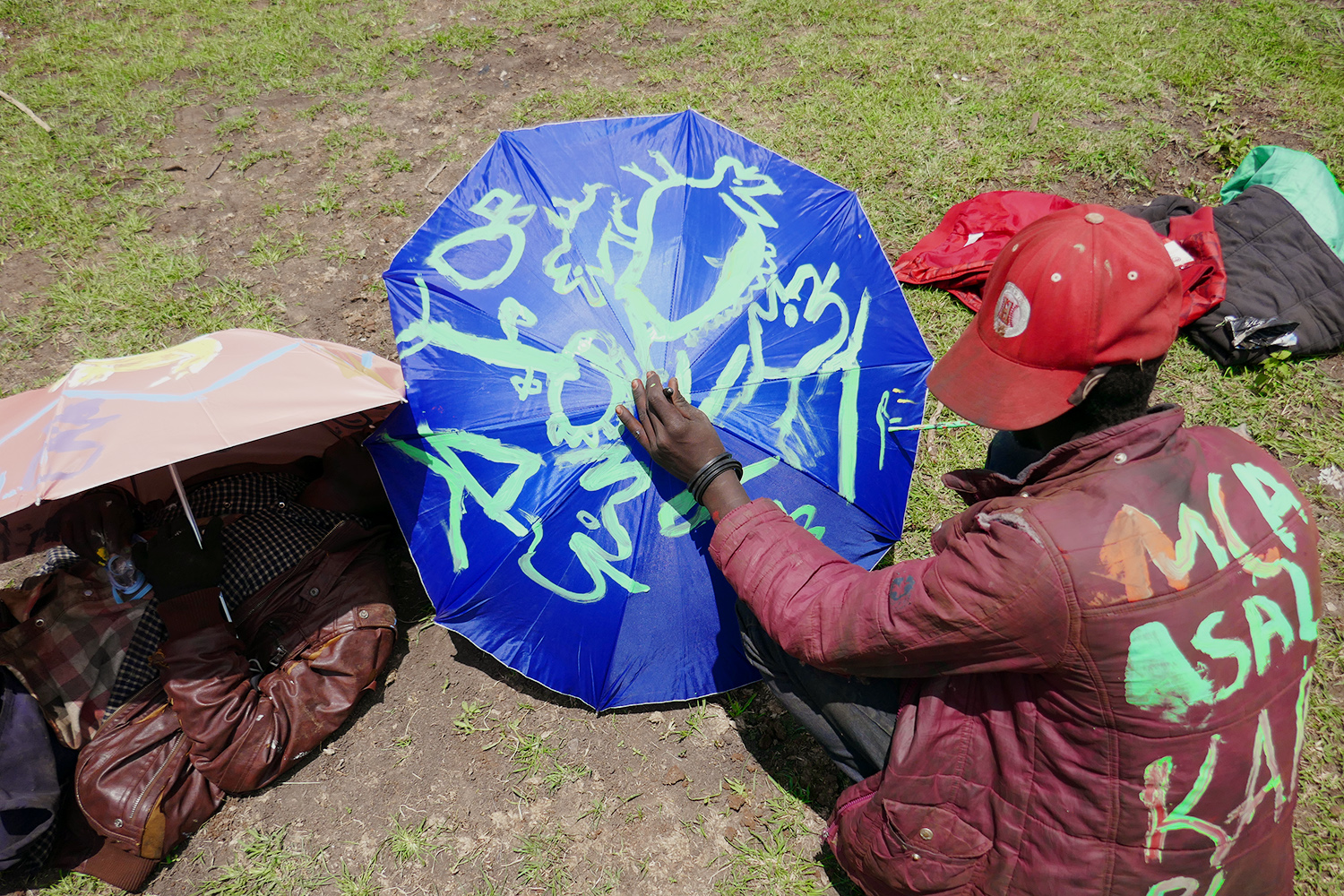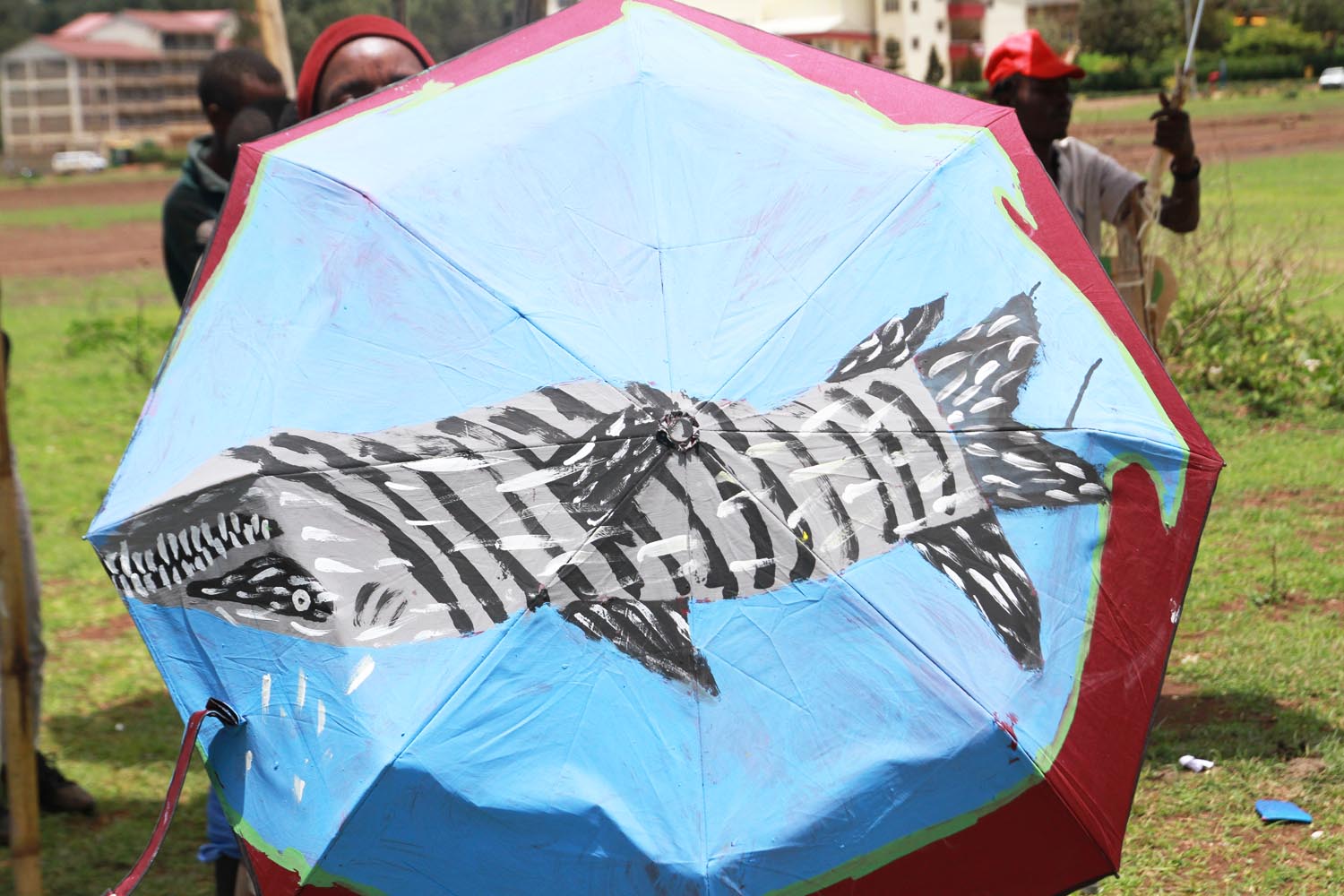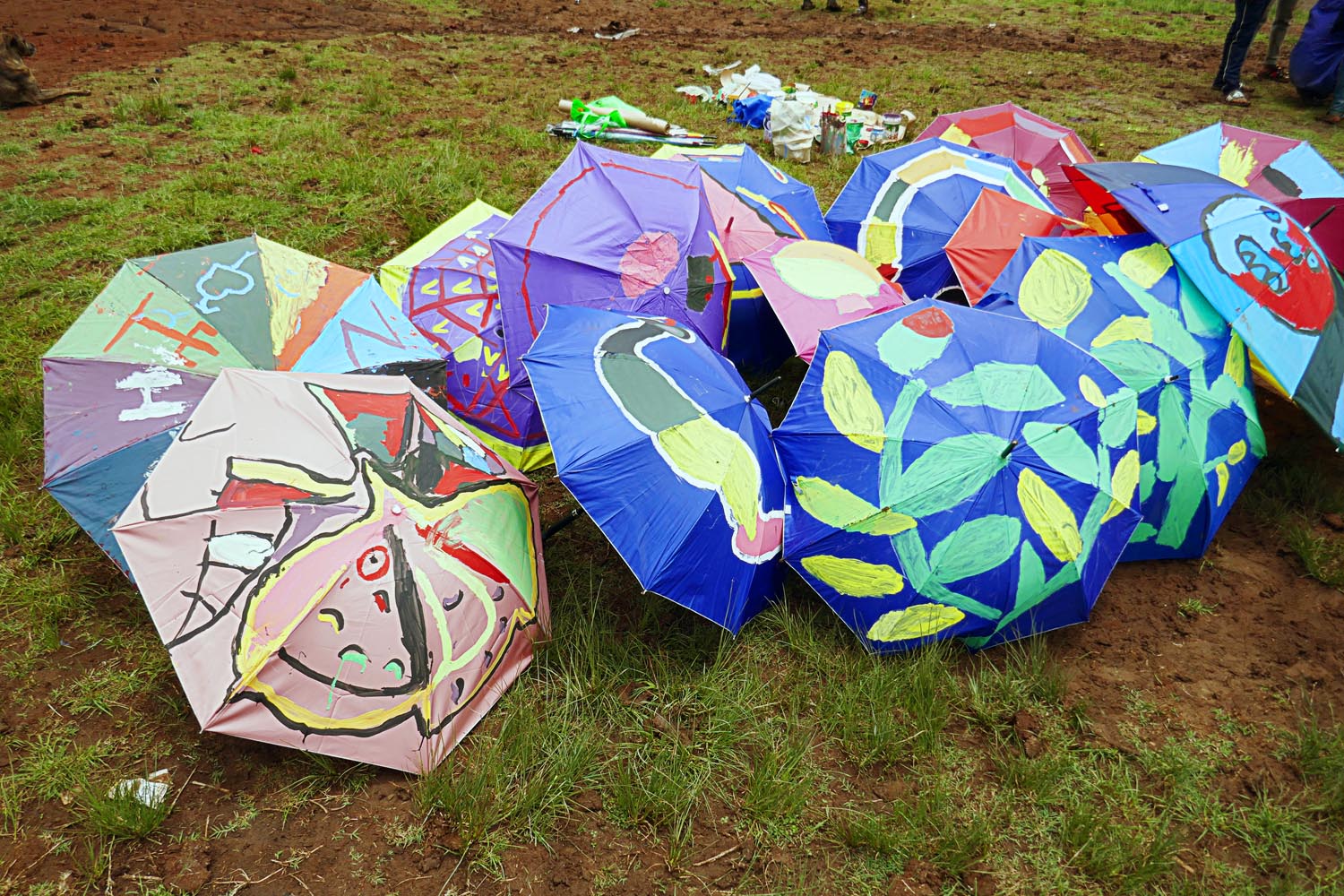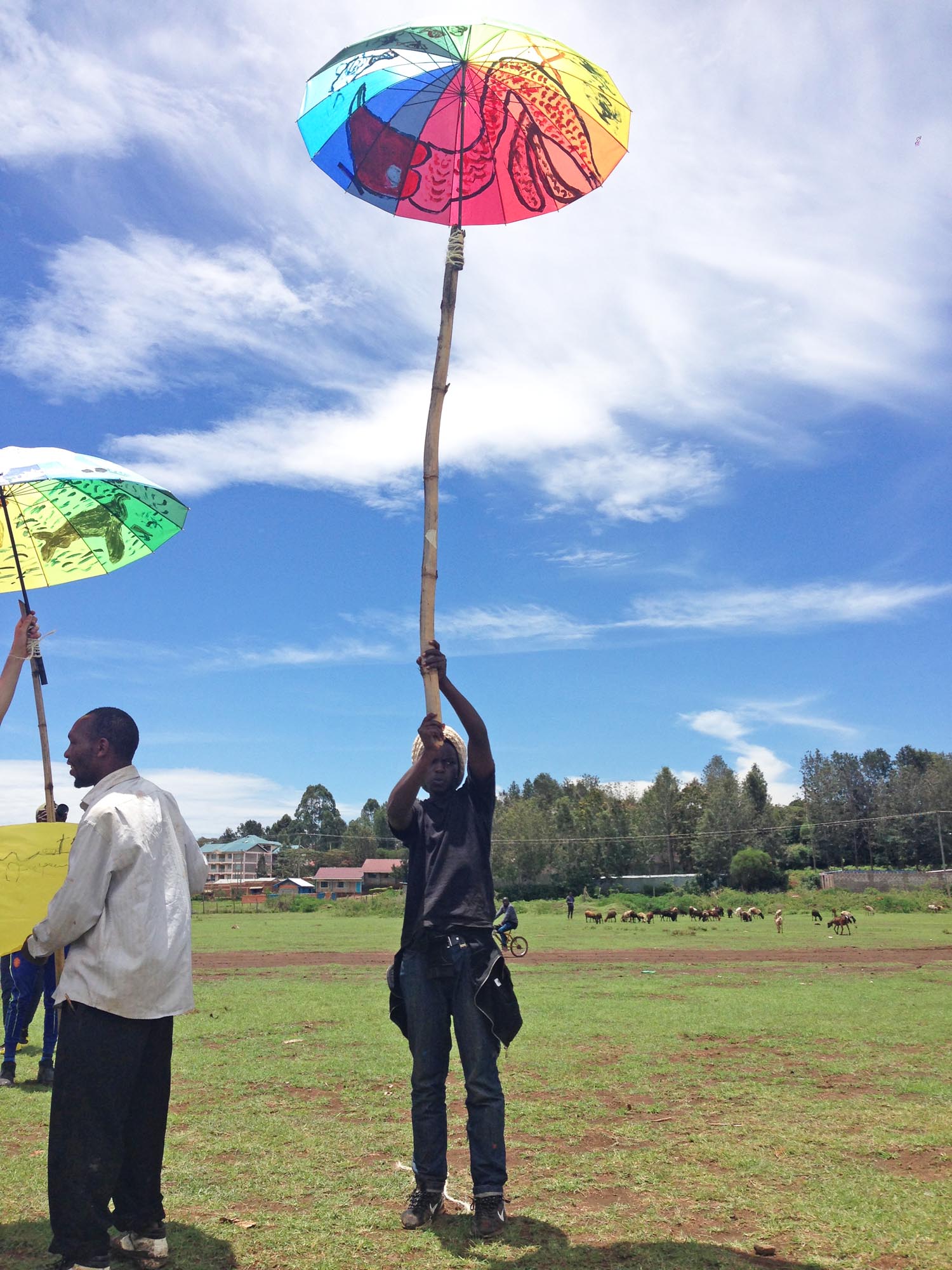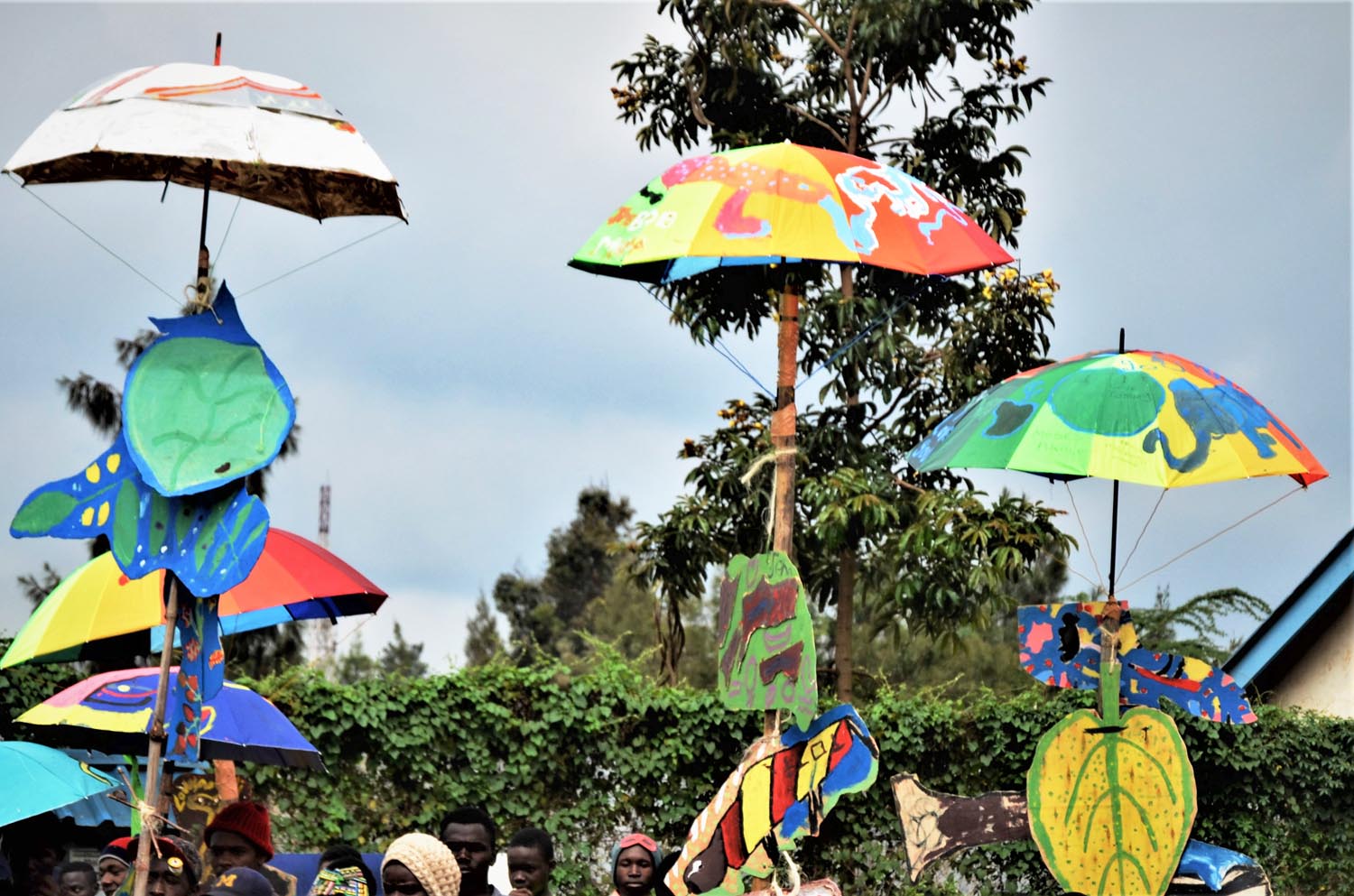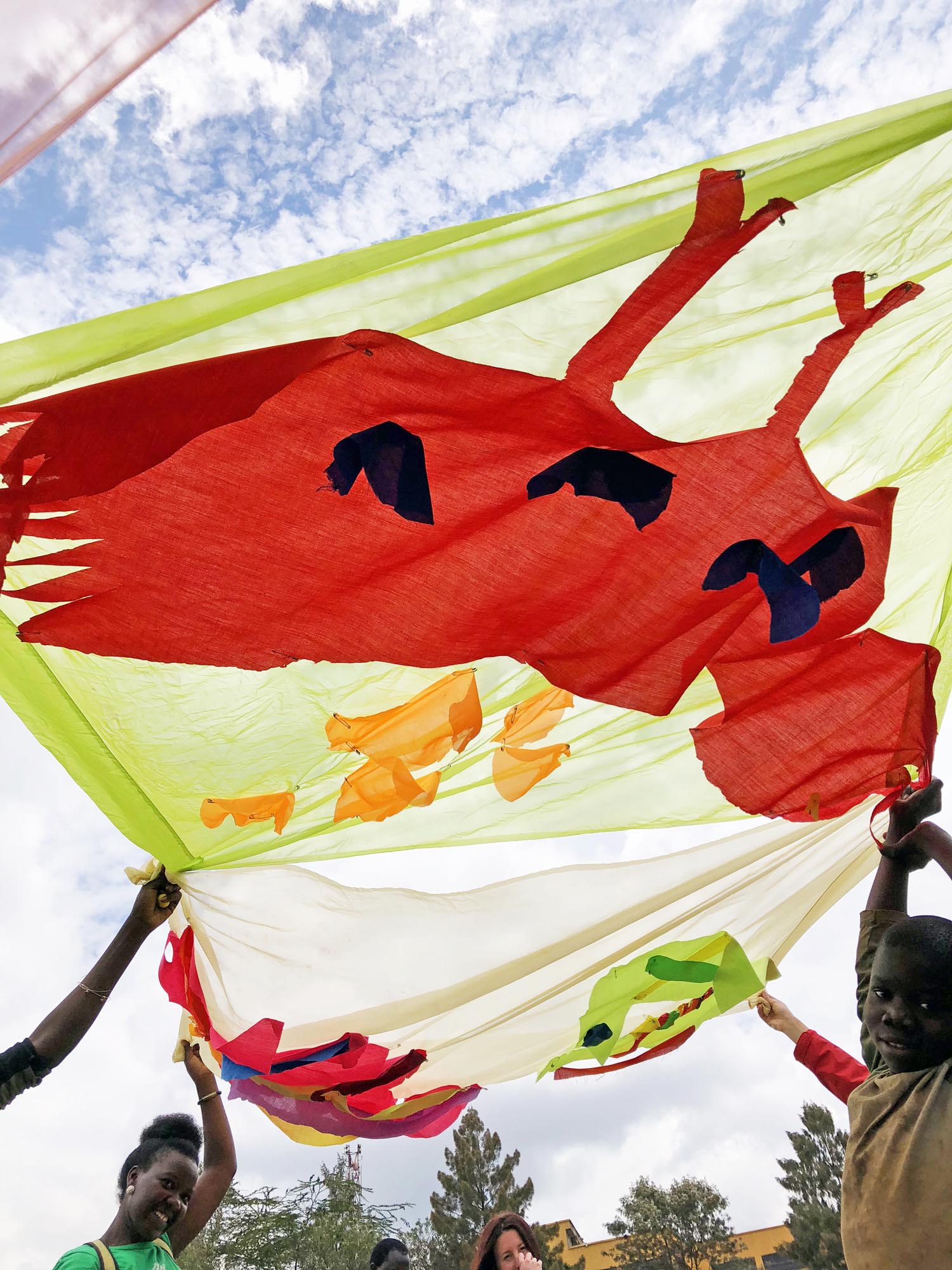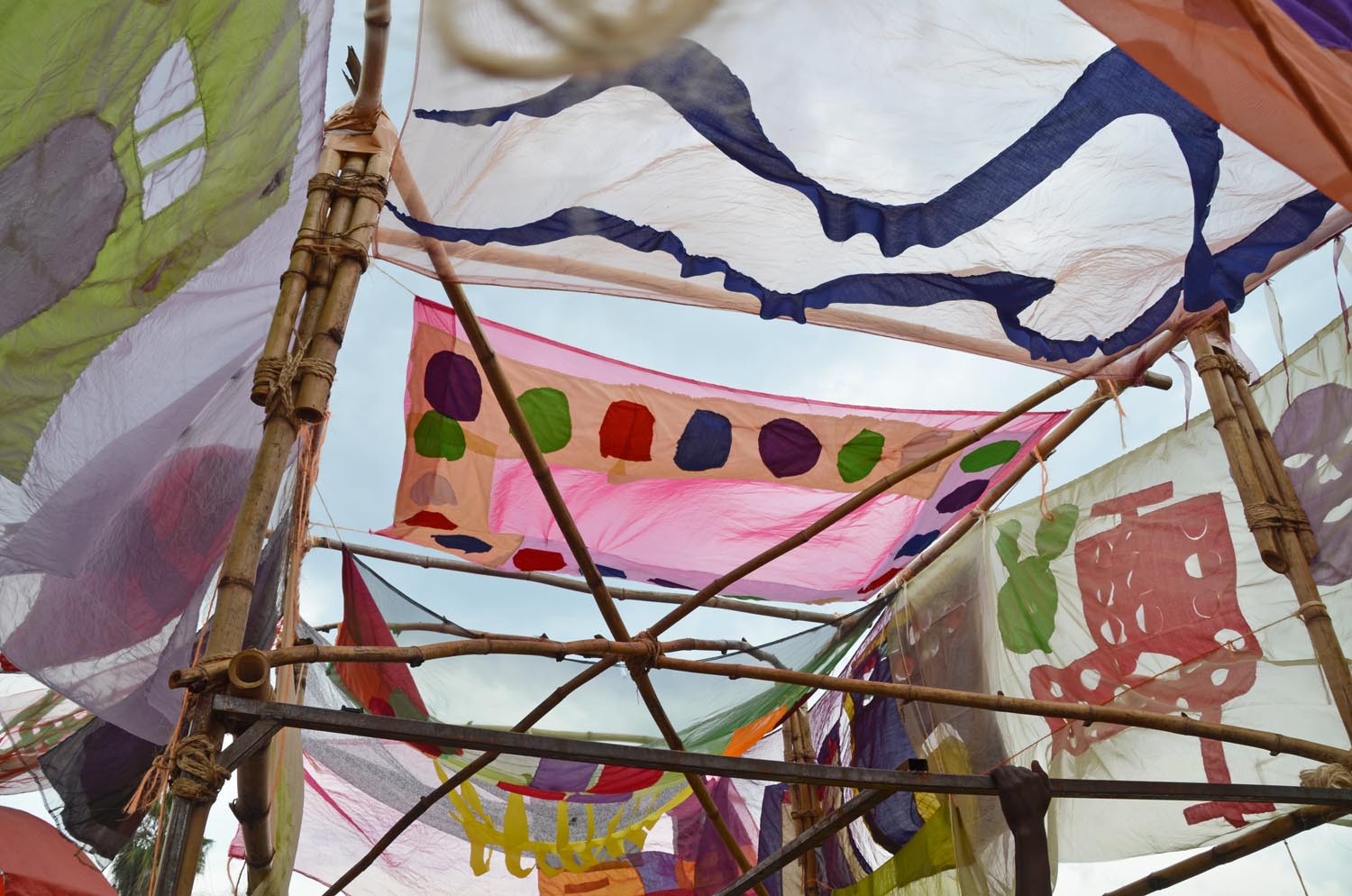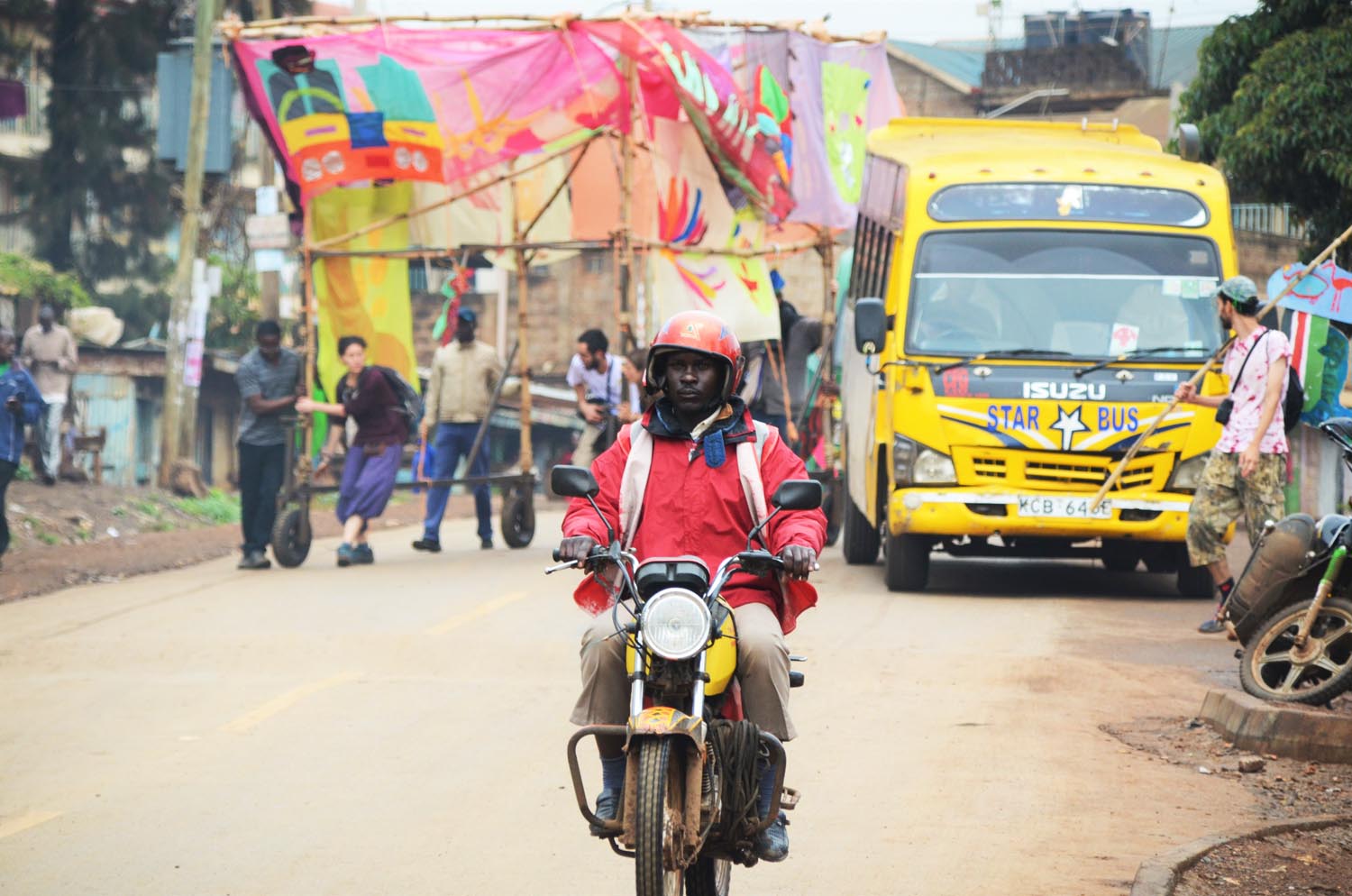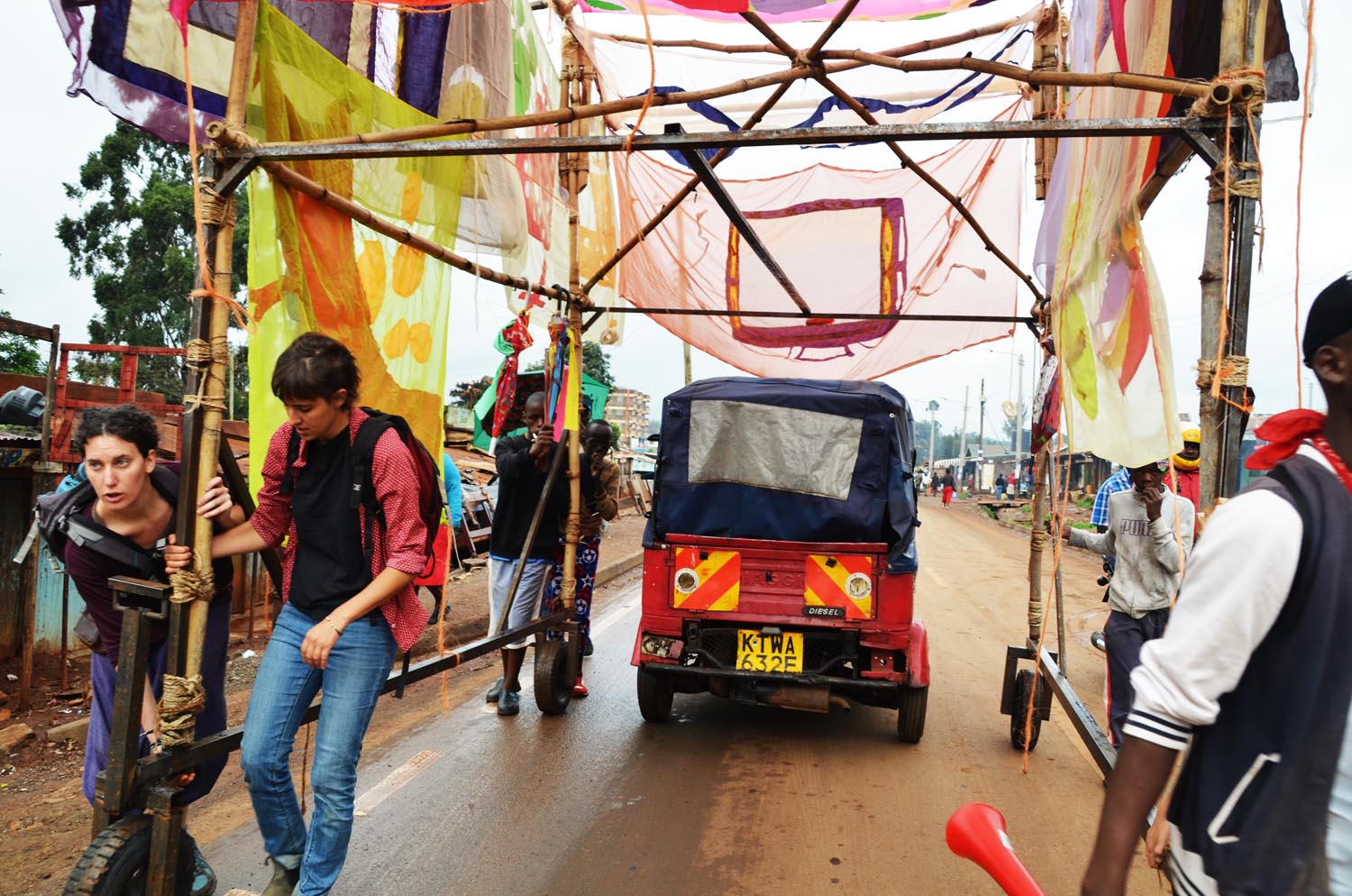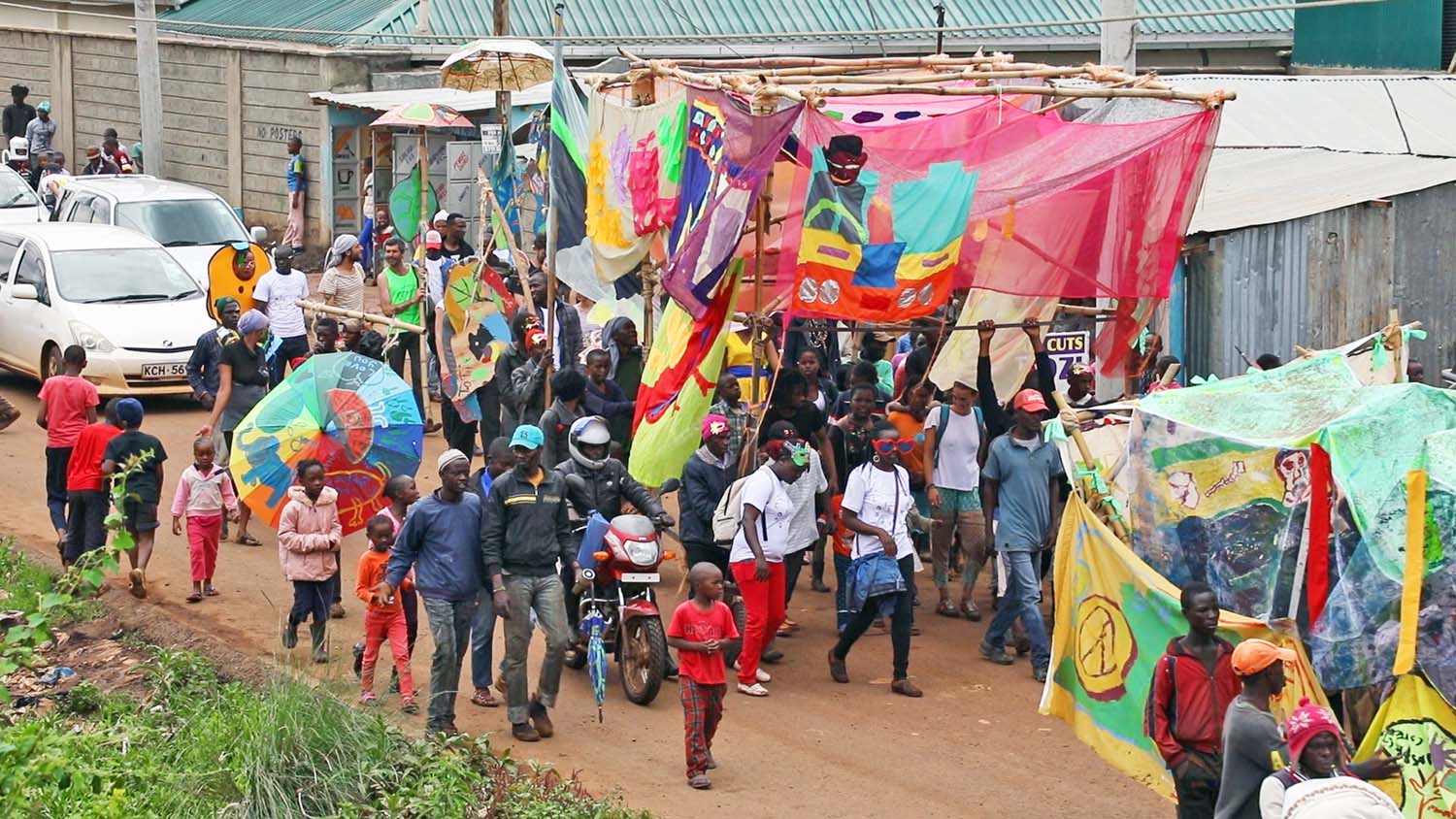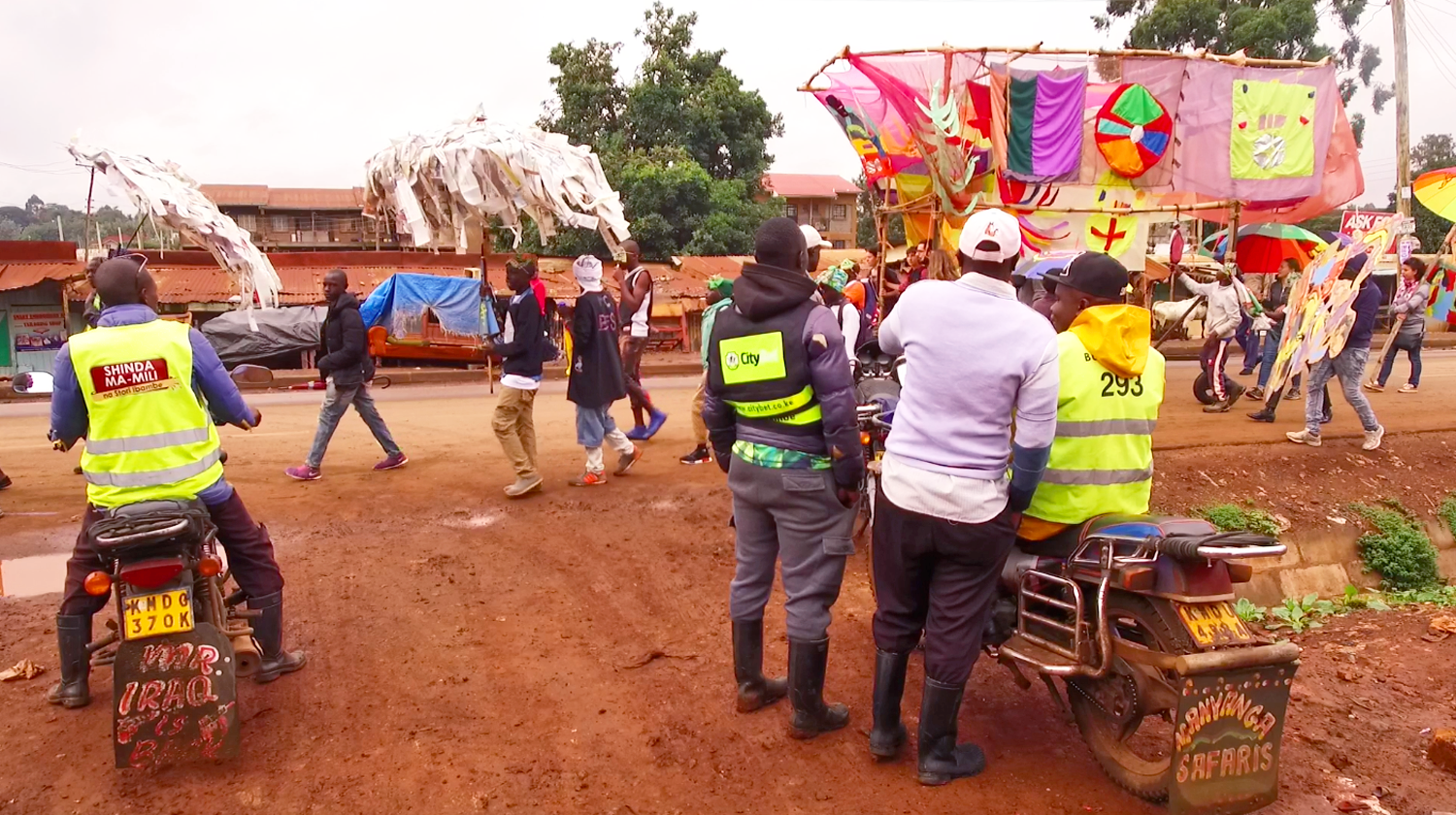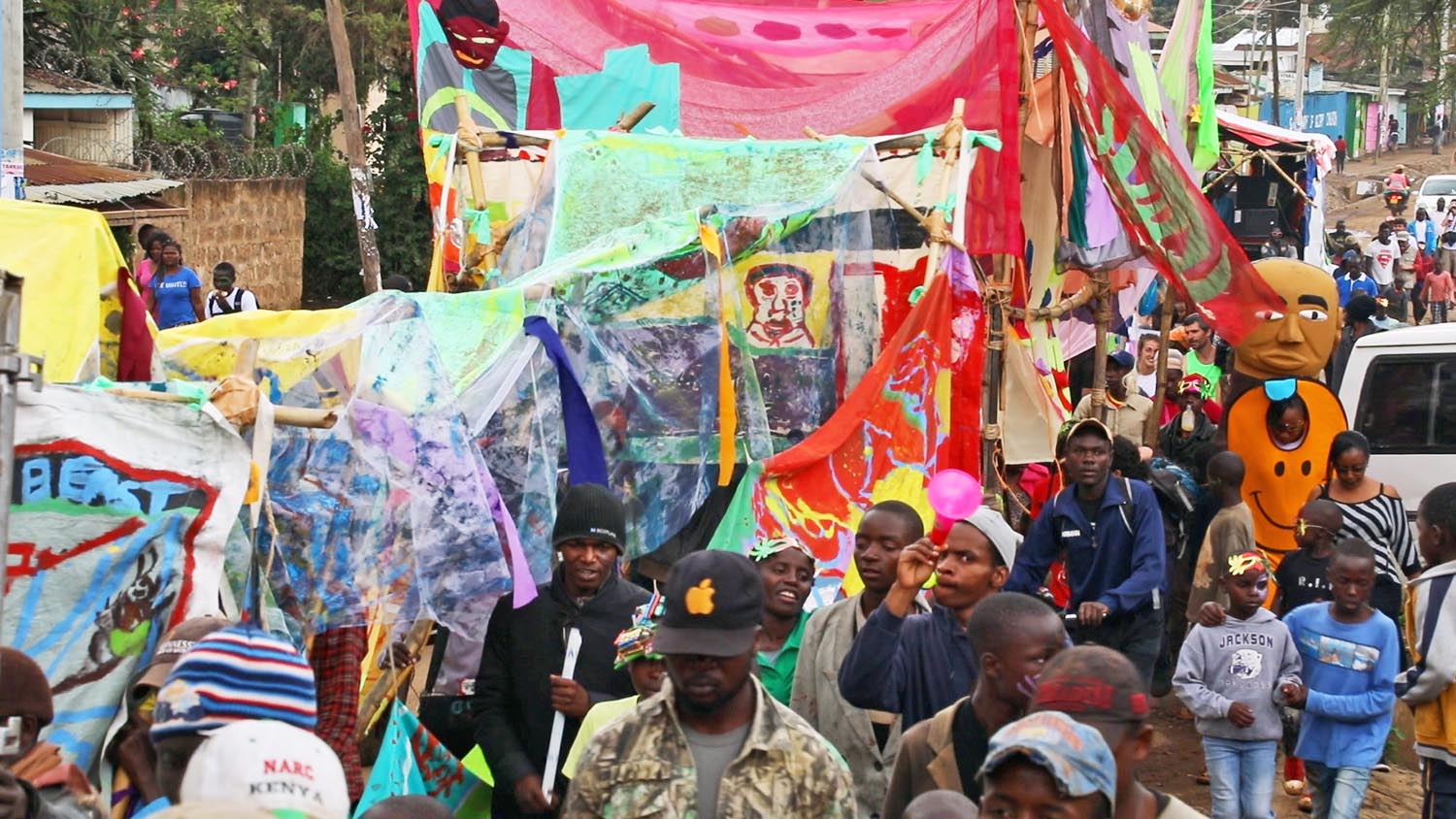A matatu can fly, or almost: carefree, skipping traffic, light and levitating, passengers, engine, tires, transmission and muffler included, made of thin fabric and light.
A hardware store can also fly, in the wind and in the sun: plates, shovels, saws, hammers, scales, all with special powers, darting.
Another matatu then, can be long and sinuous like a dragon and meander through the streets, welcoming and dancing on the inside and accessible from any part: every point is good for entering and exiting, each coil good for improvising a song or a dance step.
A house made of plastic and bamboo sits atop a car, roving: irreverent pirate and solid shelter at the same time.
An enchanted forest of very tall trees dripping with noisy leaves: at the top, umbrellas and fantastic inhabitants look down. The world turned upside down in Nairobi that day, April 14, 2018, after two months of workshops in the sun and in the rain: the world of the kids, both girls and boys, living in the streets of Kawangware, Mtindwa and Ngong. Each of these places hosts a base, and each base is a large and complex family in which each person stands up for themselves as well as supports and cares for each other each day. Vulnerable and discriminated against by the richest classes, these families have created a wonderful feast, revealed their universe, and shared it with us; their imagination and their work have given a unique form—unlike anything ever seen—to the Nairobi Carnival, the first ever.
The party reclaimed the streets: that day, the Riruta-Satellite neighborhood really seemed to be everyone’s, and it shone because it had its children and teenagers at its center. The beauty of Nairobi is their beauty.
The video tells the story of Carnival! Nairobi, collecting many different fragments and putting them together. The point of view is that of Derek MF Di Fabio, a visual artist who worked with the boys in the workshops together with Cherimus, the Koinonia educators and the girls and boys of the rescue centers. Derek focuses on the kids who live in the street and on all the collaborations with local artists and artisans who, by joining forces, made the carnival possible.
The beautiful soundtrack of the video was also produced in the bases, through workshops conducted by musician Luca Garino. A group of young musicians from Nairobi (MegaLink Ent Studio) who have also lived in the street in the past, curated the music production. The video also tells of the meeting of Ibrahim Nehme—one of the two artists in residence for Darajart 2018, together with Luca Garino—and Byub, a poet who lives on Kabiria Road. Ibrahim, he tells us, became a poet in Nairobi. In the video, Byub’s words are accompanied by images of a tree fallen during a storm at Kivuli Center, almost a thunderbolt.
–
Matteo Rubbi
–
